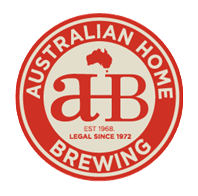The Origins of Stout Beer Styles
Stout has seen a recent resurgence in popularity in Australia, both in home brewer circles and commercially with Coopers stout sales volumes reaching the highs of the 1950’s[1]. The origins of this 300-year-old beer style are testament to its resilience.
Where did Stout come from?
Stout is derived from the English ‘Porter’ beer, originating in London in the 1720’s and popular among the working class. By the 18th century the Porter was the beverage of choice amongst Dockside and Street Porters and thirsty London workers. Early London Porters were commonly strong beers, around 6.5% in alcohol, to maintain the freshness and integrity of the beer over longer periods.
Porters were brewed by dozens of breweries producing different styles and characteristics. One of these brews was a strong, dark, roasty beer named ‘Single Stout’. This appears to be one of the earliest examples of when the word ‘Stout’ was used to describe a beer.
Porters evolved. This robust, strong, dark beer was made using a cheap brown malt produced by inconsistent roasting processes. Porters’ popularity boomed and when the Irish got their hands on it in 1776, Guinness started brewing their own versions.
In 1817, the Wheeler drum kiln invention enabled Guinness to use ‘black patent malt’ which gave the stout a more roasted and less sweet beer than the English brown barley. This was the introduction of Guinness’s famous classic dry stout.
Today Stouts and Porters stand side by side as malty dark ales with a shared history each with distinctive characteristics. Porters are commonly a rich dark brown colour showcasing the signature chocolatey coffee and caramel flavours but without the distinctive burnt roastiness of roasted barley in the Darker Stouts.
According to the US Beer Judge Certification Program a Stout is described as “a very dark, roasty, bitter, creamy ale,” while a Porter is “a substantial, malty, dark ale with a complex and flavourful character.” Check out our great range of homebrew stout recipes online.
What are the key Stout styles today?
There’s plenty to choose from in the stout style line up today and it can be a little overwhelming. Here are a few that we rate and why we like them:
Milk stout
Otherwise known as ‘sweet stout’, Milk Stout has lactose added to it which contributes body, smoothness, and sweetness to the beer. Its black colour defies its creamy, malt character and delicious chocolate, caramel flavour profile. Milk Stout came about when the English workers used to add milk to their stout for a boost of nutrition!
Irish stout
If you walked into a pub in Ireland today and asked for a pint of Irish stout, you’d get a black, slighted ruby coloured beer. It would be full bodied and dry from the dry-roasted barley and roasted malt aromas. Medium to medium-high hop bitterness is characteristic of Irish Stout and the head should be a smooth, creamy white due to nitrogen gas taps.
American stout
In the 1970’s a few American independent brewers tried their hand at brewing stout having enjoyed it overseas. The Sierra Nevada Stout is the probably the best example of a true American Westcoast style Stout from these stout pioneers and it’s still popular today. Pitch-black in colour and generous in American Cascade hops, this creamy, heavy dark malted beverage boasts coffee and dark chocolate aromas. It’s a stout that asks to be drunk year-round.
Oatmeal Stout
Sometimes Dark brown or black in colour, Oatmeal Stout is brewed with the addition Malted oats producing a soft creamy mouthfeel and sometimes distinctive nutty flavour. Smooth roasted malt character and distinctive malt aromas and the low-to medium alcohol style makes it a versatile beer.
Imperial Stout
Imperial Stout is one of the darkest stout styles and is big in both flavour and alcohol content at around 9%. The high alcohol content offers sweeter, dark chocolate and coffee flavours. This stout is also known as Russian Imperial Stout as the English exported it to the Baltic states. Russian Catherine the Great was apparently quite fond of this tipple. The first beer exports spoiled on the long sea journey, so fortunately the enterprising English fixed this by adding more alcohol to the brew. Problem solved! Britania rules the waves.
Are your taste buds tingling? Ours are and I reckon I can feel a stout brew coming on soon at AHB!
In the tradition of the finest Dark beers, our stout Recipe Kit range offers some of the finest examples of the stout styles we’ve talked about. Here are couple of our fan favourites.
Cherry Chocolate Milk Stout – 5 Stars
OMG Unbelievable WOW WOW WOW - the team at Australian Home Brewing said it was good, what an understatement!! It is absolutely FANTASTIC, full of cherry choc flavour and as smooth as silk, easy to follow instructions, this is an absolute winner.
Dark Abyss Imperial Stout - 5 stars
“Incredible Imperial”
Genuinely the best stout I've drunk (lived in UK most my life and enjoyed Guiness from the brewery tap in Dublin): a perfect balance of sweet and just enough bitterness to make it very moreish! Thick and full bodied, yet crisp. Initial cream soda and vanilla aromas lead to coffee and biscuity burnt toast flavours…. I'll be brewing this again!
[1] https://theshout.com.au/coopers-highlights-major-stout-resurgence/
Sources: https://blackhops.com.au/stout-vs-porter/
